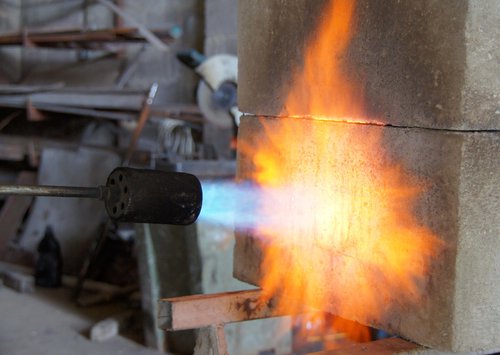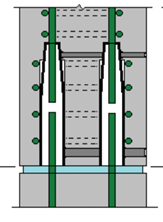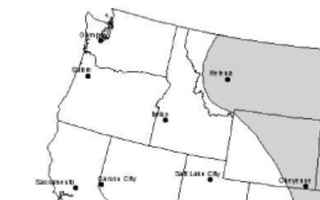
Resilience is defined as the capacity to recover quickly from difficulties. Resilient building structures can withstand and recover from extreme events like fires, earthquakes and storms. There are three essential attributes to making a structure resilient: environmental quality, structural durability and building recovery. When put to the test, precast concrete structures have a superior ability to balance the attributes needed to achieve resilience.
Environmental Quality – Ability to Overcome Disaster
There are many inherent environmental qualities of precast concrete that make it an excellent choice as a building material. Concrete is low maintenance, mold resistant and non-combustible. Fire resistance is one of the top considerations when determining a building material. Concrete’s passive fire protection contains a fire, preventing it from spreading to other areas of the building. This minimizes the damage allowing the building to return to use more quickly.

Precast concrete fire resistance rating is typically determined by its heat transmission endpoint and not its structural endpoint. The heat transmission endpoint is determined by the rise in temperature on the opposite side of a wall during a fire event, while the structural endpoint is collapse of the wall. Precast components maintain more structural strength than other material types during and after a fire event. An example of this was shown during the construction of POP Denver when the basement waterproofing caught fire from welding sparks. Since this area was surrounded on three-sides by precast, the team was able to control the fire, limiting the spread and avoiding a catastrophic event, with construction resuming the following day. The final project will be an artistic landmark shaping the Denver community.
Concrete’s natural resistance to fire improves the safety of building occupants, fire fighters and neighbors during a fire event, ultimately boosting community resilience.
Structural Durability – Resilient Buildings that Perform Over Time
How a structure performs under extreme conditions over a short period of time, and then how that building will go on to serve its occupants over the longer-term is the most fundamental definition of resilience in building design. Precast members are durable, have a high load capacity, and exhibit adequate ductility that allow it to perform well under extreme conditions.

Figure 2: Emulative base connection example
An example of precast durability is its performance during an extreme event, like an earthquake. Earthquake loads move the ground and create lateral and vertical forces at each level of the building. Precast concrete uses high-strength concrete and prestressing strands to achieve a high load capacity both laterally and vertically. Prestressed members provide stiffness to resist earthquake loads and maintain the ductility needed for a resilient structure. The concrete’s mass assists in resisting uplift due to lateral forces and there are a variety of base connection types to satisfy a building’s seismic load requirements. Figure 2 is an example of an emulative base connection that provides additional ductility needed during a seismic event.
Precast buildings are long lasting and durable buildings that can perform for over a 100-year lifespan.
Building Recovery – The Community Value
The recovery of a building refers to the building's ability to get back to service after an extreme event; this is addressed in the pre-construction design phase. As a result of recent changes in the IBC storm shelter guidelines, Midwest states with wind speeds greater than 250 mph, as referenced in Figure 3 below, are required to design all new schools with ICC 500 storm shelters. Precast concrete is a proven option to meet the ICC 500 code requirements for storm shelter design. Precast has been tested and proven to show excellent resistance against flying debris, a leading cause of deaths, injuries and property damage, from tornados or hurricanes, while achieving the strength needed for storm shelter wind loading.
Tornados and hurricanes can be detrimental to a community, destroying buildings and homes. The inherent strength of precast concrete makes it resistant to high-speed projectiles during a storm, making buildings safer for occupants. Properly designed precast structures can provide a safe place during high winds and a sturdy haven after a storm to support the rebuilding of the community it serves.

Figure 3
The Many Resilient Benefits of Precast
Precast creates resilient, safe, and durable buildings, that can get quickly return to service after a severe event, require low maintenance, are mold resistant and naturally fire resistant. Since prestressed members are manufactured with high performance materials in controlled environments, it has enhanced performance under extreme conditions. The structures they ultimately build, not only serve occupants and the community for today, but also for tomorrow and for years to come.
About the Author: Bria Lange graduated with her bachelor’s degree in Civil Engineering from Iowa State University. She has worked in the construction industry as a Structural Engineer for over 10 years and has diverse experience designing steel, cast-in-place concrete, bridges and precast concrete structures. She has been with Wells’ Great Lakes engineering team since 2017.



